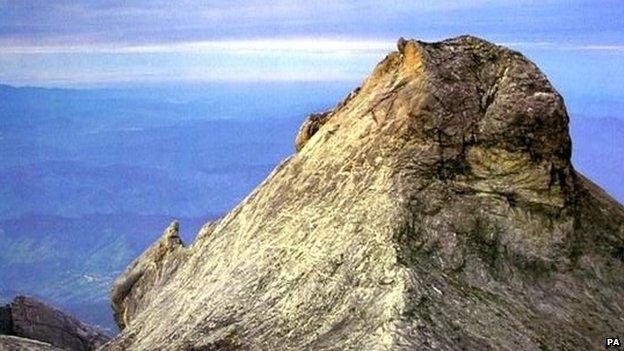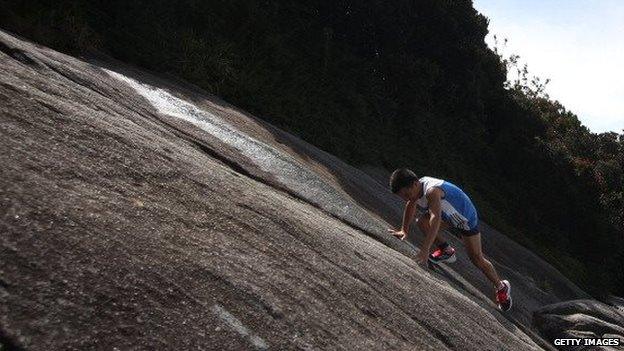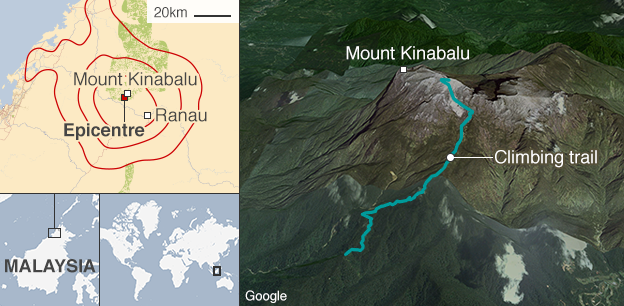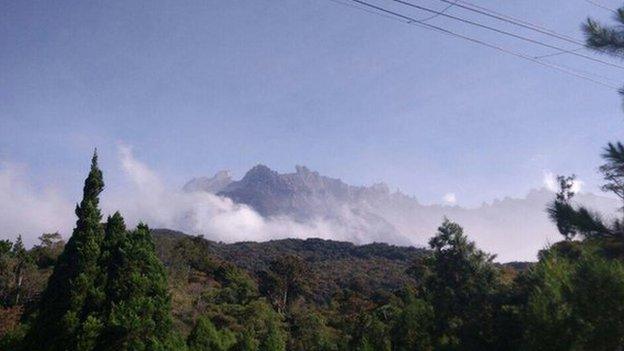The call of Malaysia's 'conquerable' Mount Kinabalu
- Published

Tourist officials say the climb should be comfortable for anyone fit enough
Malaysian tourism officials describe Mount Kinabalu as one of the "safest and most conquerable" peaks in the world, which helps explain its enormous appeal.
The mountain is in the news after climbers became stranded there after an earthquake, but school groups and 80-year-olds are among the estimated tens of thousands who safely climb its summit each year.
It is a road well-travelled. Climbers must pay for a guide. A rest house more than 3,000 metres up serves porridge, coke and tom yam soup.
Apart from breathtaking views from one of South East Asia's highest mountains, visitors can enjoy the vast array of wildlife in the Mount Kinabalu National Park, including carnivorous plants.
But some say Kinabalu should be approached with caution.
"Despite its popularity, it's a very tough trek and not to be undertaken lightly", advises Rough Guide, external.

The mountain, part of a World Heritage site, is a major draw for tourists
Bad weather can scupper a trip, or at least make it very miserable. The dizzying, nauseating effects of altitude sickness is also a risk on the 4,095m peak.
The mountain has seen deaths - in 2001, British teenager Ellie James died after becoming separated from her group in adverse conditions.
Last year German student Viktoria Paulsen fell to her death from Low's Peak, the highest point of Kinabalu.
And a British army attempt to complete the first descent of Low's Gully ended in fiasco.
The ten-man group split, and although the advance party was successful, the remainder got trapped, to be rescued almost two weeks later - including six days without food.
A British colonial administrator, Sir Hugh Low, made the first recorded ascent, but stopped short of climbing Mount Kinabalu's highest peak, describing it as "inaccessible to any but winged animals".

Spenser St John, another Victorian-era Briton whose name still labels the mountain today, reportedly faced locals armed with spears on a later attempt. The peak was finally reached in 1888 by John Whitehead.
The local Kadazan Dusun tribe consider the mountain sacred. One theory on how it got its name is that it is derived from "Aki Nabalu", which translates into "revered place of the dead".
An alternative piece of folklore has the name derived from "Cina Balu", or "Chinese widow". The widow referred to is a distraught Kadazan woman, abandoned by her Chinese Prince husband, who then retreated into the mountain and turned into stone.
The gulf between those who see Mount Kinabalu as a tourist attraction, and those who see it as a sacred landmark, remains, just as Spenser St John found.
A group of tourists who posed nude on the peak last week have angered some locals, who say the earthquake that trapped a group of climbers on Friday may have upset mountain spirits.
- Published6 June 2015
